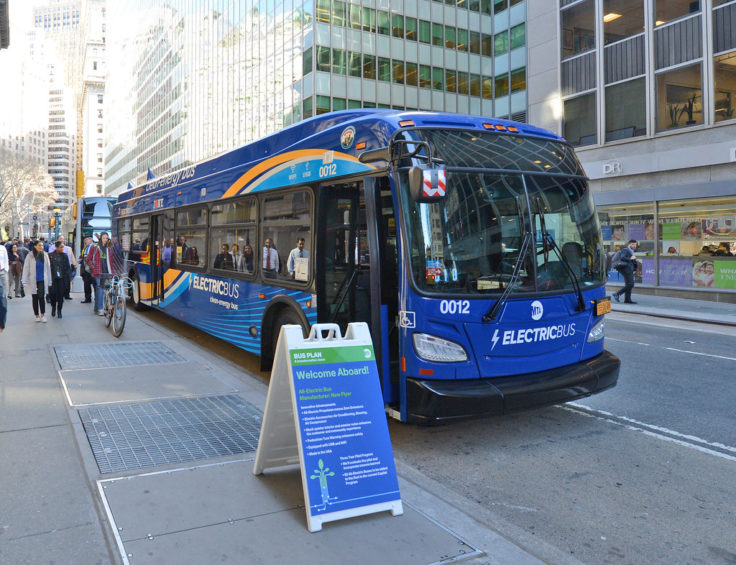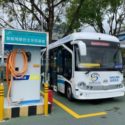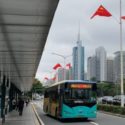May 17, 2019
You Must Walk Before You Can Run: How to Get an Electric Bus Fleet Running

Why Electrify?
One of the biggest issues that cities worldwide face today is air pollution. As 90% of the world’s population breathes highly polluted air, cities are issuing more and more pollution alerts in an attempt to mitigate the harmful risk of breathing in bad air. While electric private vehicles are increasingly viewed as a popular solution to pollution and climate change, the electrification of vehicles shouldn’t stop there. As mentioned in our previous blog post, bus fleets are an ideal starting place to begin an electric revolution. Electrification mitigates pollution and the process of fleet electrification can lead to valuable enhancements in efficiencies within the fleet itself. The steps to electrifying a fleet are generally straightforward but within them there are many important aspects and questions to consider to guarantee a successful deployment. This blog post will review suggested actions to take in electrifying a fleet, as well as important considerations to keep in mind throughout this process.
Step 1 – Set a Target & Begin Improvements

To transition a bus fleet to zero-emission, most cities should think about a multi-step, multi-year process. First, cities should establish simple, clear, and time-bound targets, such as a zero emissions by a certain date. Some examples of this approach include cities that started with bold policies or legislation that set emissions goals for the fleets by a specific year. For example, in July 2017, Los Angeles (LA) Metro adopted a transition plan to operate a 100 percent zero-emission bus fleet by 2030, following a strong push from Los Angeles Mayor Eric Garcetti. São Paulo adopted a climate law in 2018 that will require 100 percent elimination of fossil fuels within 20 years. Political will is a necessary ingredient in setting ambitious goals. Since fleets typically replace ten percent of their rolling stock per year, a full transition is feasible within ten years.
Step 2 – Fleet Improvements & Program Pilot
Once goals are set, the city can start piloting the electrification program. There are different approaches to pilots given the scale the city chooses to implement. Sometimes cities can study the conclusions from pilots performed elsewhere to understand and determine their implementation methods and approaches. In performing a pilot, the goal is to minimize the number of variables being tested, while also minimizing the risk to the system. Some variables to be tested include inclement weather, space, location, and timing for refueling or recharging. When it comes to recharging, testing in the pilot should focus on the range that one charge covers and how that can affect a given route. Some possible approaches to a pilot include starting with:
- BRT corridor. BRT routes are often self-contained with fixed infrastructure, dedicated buses, depots, and maintenance staff, enabling a small section of a bus fleet to make the electric transition.
- Planned fleet renovation. Most fleets have a ten percent annual replacement rate therefore new vehicles can be transitioned to electric technology as fleets are replaced.
- Depot by depot. A transition can be undertaken by a given depot, gradually increasing over time.
As knowledge is gleaned from the pilots, operators can move more confidently into transitioning a single depot to electric buses and eventually the entire fleet. The pilot stage should be limited to a smaller number of vehicles to be tested as a demonstration. This will allow agencies to test new technology and identify constraints on a very limited scale without putting at risk the delivery of public transit.
 Step 3 – Implementation, With Care
Step 3 – Implementation, With Care
After enough information has been collected during a pilot, agencies can develop an implementation strategy coinciding with planned vehicle replacements. Sometimes a transition takes place after or during the pilot, as the transition moves from depot to depot. This plan should reflect the upcoming investments in vehicles, fuels, fixed infrastructure, and staff, as well as the annual milestones and procurement schedule. Public outreach is important to prepare the public to adapt to a multi-year technology transition. Any implementation strategy must also detail how the agency will scale up the roll out of electric buses.
While it may not be possible to transition to electric vehicles immediately, cities can start with incremental changes throughout the electrification process like switching to cleaner fuels and better ‘soot-free’ engines, like the Euro VI. Cities can also procure buses that create fewer emissions like hybrid-drive, low rolling resistance tires, or use renewable or natural gas. The simple combination of fuel efficient buses and cleaner fuels can greatly reduce emissions. It is important to focus on both short term and long term goals throughout the electrification process and stay focused on ongoing improvements.
Added Value
One important aspect of the electrification process is the opportunity it provides to rethink and improve the bus network. It’s a natural break with the past, which is a huge opportunity to make improvements in access and to the environment. Throughout the transition to clean buses, cities have an organic moment to perform a fuller audit of their bus operations. It is worth asking where else can improvements be made and what frequent transit corridors and networks are possible in upgrading the service plan. Technology matters for climate change and air pollution, but service is the ultimate determination for ridership. Through harnessing electrification, cities can transform their technology and make other important transit improvements.


